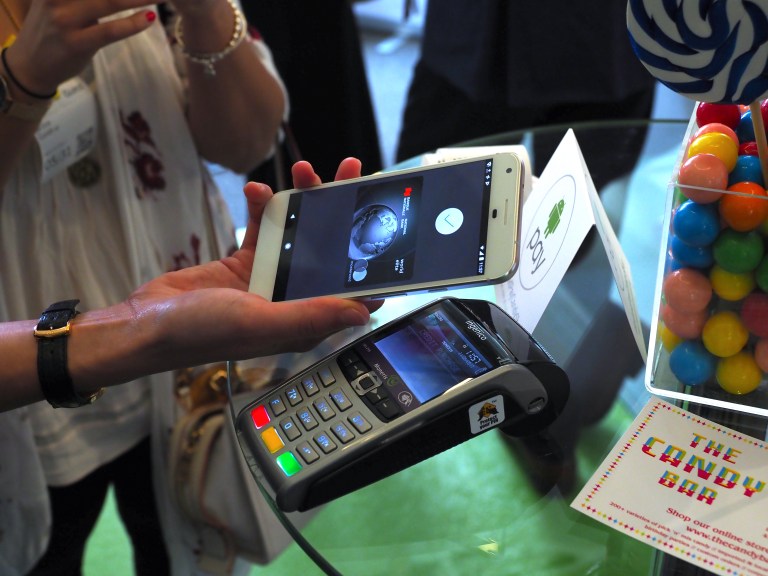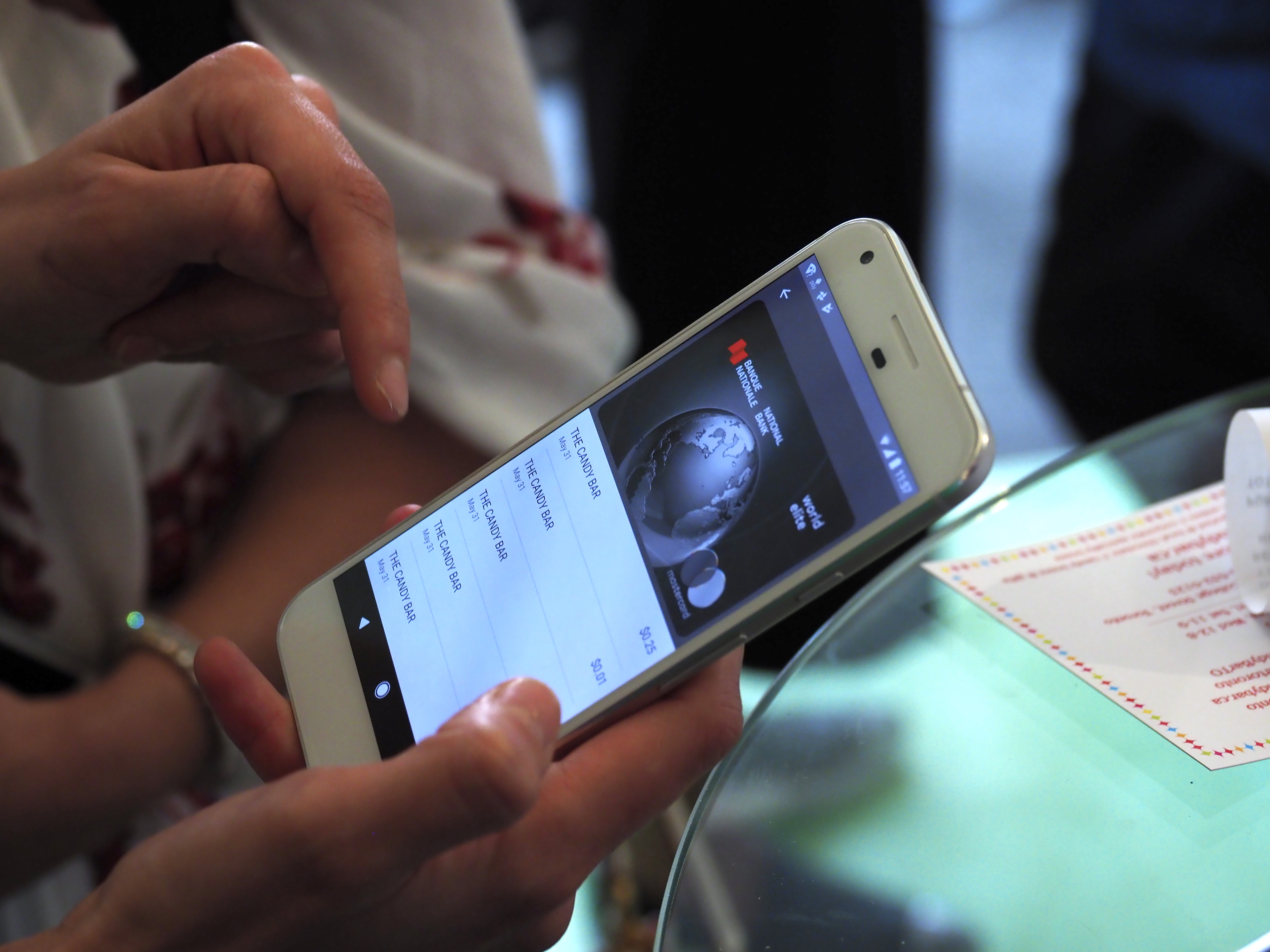
Android Pay launched in Canada on Wednesday, with support for a number of major banks at launch, and additional banks to be added soon. The Android Pay debut in Canada was teased at Google’s I/O developer conference keynote earlier this month, and reported as imminent last week by MobileSyrup.
The launch today includes support for Visa and MasterCard credit and debit, as well as Interac debit cards (starting June 5) from leading national banks BMO, CIBC and Scotiabank, as well as from smaller regional and specialist institutions like ATB Financial, PC Financial, Desjardins, Banque Nationale and ATB Financial. Android devices running version 4.4 of the OS or higher will be able to add cards from these banks and make mobile payments at compatible, tap-enabled terminals – which are actually very prevalent in Canada.
American Express and Tangerine support are “coming later this summer,” Google says. The noteworthy absentees from this list of supporting financial institutions are RBC and TD, which are the largest of Canada’s “Big Five” banks. Both RBC and TD do support Apple Pay, though, indicating a willingness to support mobile payment options. Spencer Spinnell, Google’s Director of Emerging Platforms, would only say at a launch event that it “expects banks will come on board over the next several quarters.”
Spinnell also noted at a launch event that the progress of Android Pay represents the result of a tremendous amount of work, since it means bringing together and satisfying a large number of stakeholders, from merchants, to financial institutions, to payment networks and to customers.
Unlike Apple, Google doesn’t charge transaction fees to any parties involved for use of Android Pay (Apple charges banks).

Android Pay uses NFC tech to transfer tokenized payment information from the device to a merchant terminal. Like Apple Pay, which launched in Canada last year, Android Pay doesn’t pass on your actual original payment card details to a merchant, but instead generates a unique token to use for transactions. To use it, once you register your card you simply wake your device, authenticate using one of your phone login methods, and tap it to a payment terminal. Also, once your cards are registered, if they’re lost or stolen, you can use Android Pay to remotely lock or wipe or disable your card.
Android Pay first launched in the U.S. in 2015, and has been rolling out to additional markets gradually since then, covering 12 in total. Other new markets coming online this year include Brazil, Russia, Spain and Taiwan, and Google will also be offering improved loyalty card integration on the merchant side. Android Pay also works in-app with a range of partners, including Uber, 1-800 Flowers and more.
Android Pay has had 1.5 million new registrations per moth on average in the U.S. alone, Spinnell said, which he argued is all the more impressive given the current state of the contactless payment system in America, which lags its equivalents in Canada, the UK and other countries. He said that one in three Canadians who own smartphones have used their device to pay for something, and noted that in Q4 2016, Canadian contactless payments rose 120 percent. Spinnell also noted that eight out of 10 Canadian retailers support NFC capability, making the market an ideal target for an expansion of Android Pay.


























